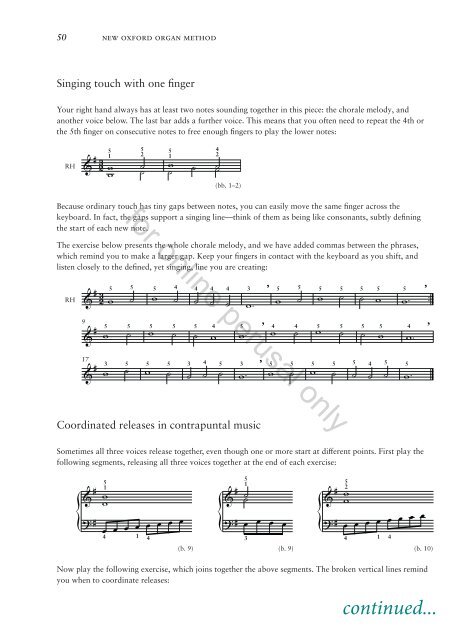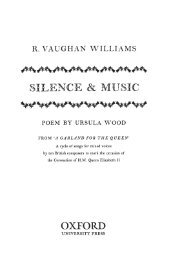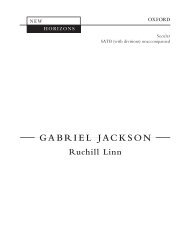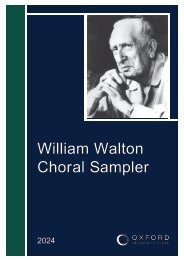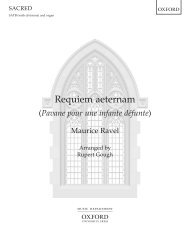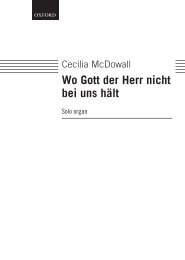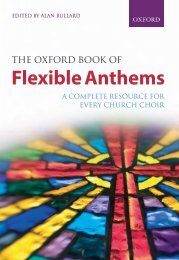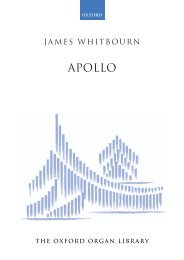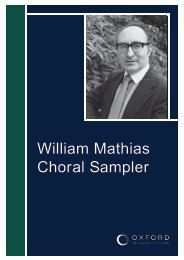New Oxford Organ Method
A single piece of repertoire is the primary focus for each chapter, with preparatory exercises providing the necessary technical work building towards the piece. Each lesson covers four main topics, which are systematically developed: practice methods, registration, fingering and pedalling, and historically-informed interpretation. The method is for keyboard players of any age who are establishing first steps at the organ with or without a teacher. It will also serve more experienced organists who want to improve their technique.
A single piece of repertoire is the primary focus for each chapter, with preparatory exercises providing the necessary technical work building towards the piece. Each lesson covers four main topics, which are systematically developed: practice methods, registration, fingering and pedalling, and historically-informed interpretation. The method is for keyboard players of any age who are establishing first steps at the organ with or without a teacher. It will also serve more experienced organists who want to improve their technique.
- No tags were found...
Create successful ePaper yourself
Turn your PDF publications into a flip-book with our unique Google optimized e-Paper software.
50 new oxford organ method<br />
Singing touch with one finger<br />
Your right hand always has at least two notes sounding together in this piece: the chorale melody, and<br />
another voice below. The last bar adds a further voice. This means that you often need to repeat the 4th or<br />
the 5th finger on consecutive notes to free enough fingers to play the lower notes:<br />
RH<br />
3<br />
& # 5 5 5 4<br />
1 2 1 2<br />
2<br />
ẇ<br />
w ˙ ˙ ˙<br />
(bb. 1–2)<br />
Because ordinary touch has tiny gaps between notes, you can easily move the same finger across the<br />
keyboard. In fact, the gaps support a singing line—think of them as being like consonants, subtly defining<br />
the start of each new note.<br />
for online perusal only<br />
The exercise below presents the whole chorale melody, and we have added commas between the phrases,<br />
which remind you to make a larger gap. Keep your fingers in contact with the keyboard as you shift, and<br />
listen closely to the defined, yet singing, line you are creating:<br />
RH<br />
3<br />
’ ’<br />
& # 5 5 5 4 4 4 4 3 5 5 5 5 5 5 5<br />
2 w ˙ w ˙ ˙ ˙ ˙ w w ˙ w ˙ ˙ w w <br />
9<br />
’ ’<br />
& # w 5 ˙ 5 w 5 ˙ 5 ˙ 5 w 4 w 5 w 4 ˙ 4 w 5 ˙ 5 ˙ 5 w 5 w<br />
4<br />
17<br />
’<br />
& # 3 5 5 5 3 4 5 3 5 5 5 5 5 4 5 5<br />
w ˙ w ˙ ˙ ˙ ˙ w w ˙ w ˙ ˙ ˙ ˙ w<br />
Coordinated releases in contrapuntal music<br />
Sometimes all three voices release together, even though one or more start at different points. First play the<br />
following segments, releasing all three voices together at the end of each exercise:<br />
5<br />
1<br />
{ &# ?#<br />
5 1<br />
5<br />
w<br />
{ &# ˙<br />
œ œ œ œ œ œ œ œ ?# œ œ { &# 2<br />
w<br />
œ œ ?# œ œ œ œ œ œ œ œ<br />
4 1 4<br />
3<br />
4 1 4<br />
(b. 9) (b. 9) (b. 10)<br />
Now play the following exercise, which joins together the above segments. The broken vertical lines remind<br />
you when to coordinate releases:<br />
continued...


